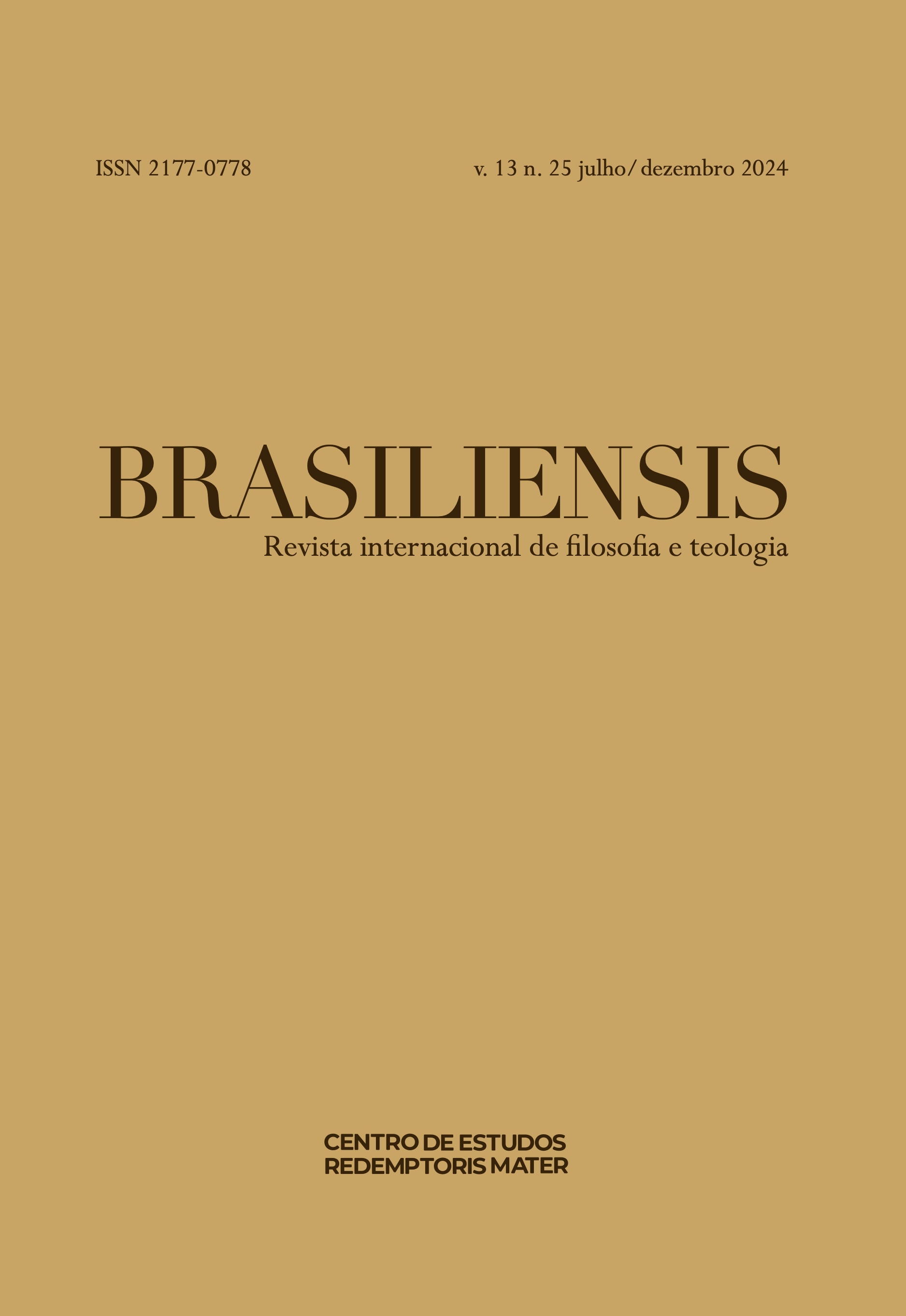Violence as an expression of social evil in René Girard
Main Article Content
Abstract
The conception of man as a mimetic being driven, by this universal and constitutive category of the human being that is imitation, to violence, gives us reason why we can speak of mimesis as a permanent source of social evil. Evil would have begun a moment before all symbolization, because mimesis is also found in animals as a source of violence and conflict. In human beings, a plus is added to the instinct, which is the infinite desire according to the other’s desire. Evil is present ab initio, in a bivalent relationship, as a cause and as a consequence. The myths describe it in detail due to its connotations: stain, servitude, slavery, spontaneous envy, “bad mix”, indifference, accusation. Of these terms, accusation is the most biblical, the most profusely analyzed by Girard and the one that has the most force in the process of defining evil. Sometimes it gives him ontological force, since Satan - his personified form - means the accuser par excellence. Beneath the sacralization, there is always a sacrificial preparation where the accusation appears against the victim, and which makes her responsible for the disasters and catastrophes that afflict the community, that is, responsible for the crisis. The victim brought evil - undifferentiated chaos - with his death he gave us the desired social order. Girardian theory allows us to understand this founding process of social orders.
Article Details

This work is licensed under a Creative Commons Attribution-NonCommercial-NoDerivatives 4.0 International License.
The Creative Commons Attribution (CC BY) license is the most permissive Creative Commons license. It allows others to distribute, remix, adapt, and build upon your work, even for commercial purposes, as long as they give you credit for the original creation.
How to Cite
References
Auerbach, E. (1982). Mímesis. Fondo de Cultura Economica.
Barahona, Á. (2014). René Girard: De la ciencia a la fe. Encuentro.
Bellinger, C. K. (1996). “ The Crowd Is Untruth”: A Comparison of Kierkegaard and Girard. Contagion: Journal of Violence, Mimesis, and Culture, 3(1), 103–119.
Carrara, A. (n.d.). Violenza, sacro, rivelazione biblica. Vita e pensiero.
Díaz, C. (1990). Yo quiero. Ed. San Esteban.
Díaz, C. (1991). De la razón dialógica a la razón profética (pobreza de la razón y razón de la pobreza). Madre Tierra.
Domenach, J.-M. (1983). Las ideas contemporáneas. Kairós.
Dupuy, J.-P. (1982). Ordres et désordres. Enquête sur un nouveau paradigme. Seuil.
Durkheim, É. (1968). Les formes élémentaires de la vie religieuse. PUF.
Fleming, C. (2014). Mimesis, violence, and the sacred: An overview of the thought of René Girard. In S. Cowdell, C. Fleming, & J. Hodge (Eds.), Violence, Desire, and the Sacred. Volume 2, René Girard and Sacrifice in Life, Love, and Literature (pp. 1–13). Bloomsbury.
Gaos, J. (1945). Dos exclusivas del hombre: La mano y el tiempo. Universidad Nuevo León.
Girard, R. (1978). Interview: René Girard. Diacritics, 8(1), 31–54. https://doi.org/10.2307/464818
Girard, R. (1984). Literatura, Mímesis y Antropología, Gedisa, Barcelona. Gedisa.
Girard, R. (1987). El chivo expiatorio. Anagrama.
Girard, R. (2006). La ruta antigua de los hombres perversos. Anagrama.
Girard, R. (2010). Acerca de las cosas ocultas desde la fundación del mundo. El secreto del hombre. H. Garetto Editor. http://www.marcialpons.es/libros/acerca-de-las-cosas-ocultas-desde-la-fundacion-del-mundo/9789872204938/
Girard, R. (2023). La violencia y lo sagrado. Anagrama.
Maceiras Fafián, M., & Trebolle Barrera, J. (1990). La hermenéutica contemporánea. Cincel.
Oughourlian, J.-M. (2012). Psychopolitics: Conversations with Trevor Cribben Merrill. Michigan State University Press.
Ratzinger, J. (2005). Fe, verdad y tolerancia. Sígueme.
Ricoeur, P. (1976). Introducción a la simbólica del mal. Megápolis.
Ricoeur, P. (1986). Le mal. Un défi à la philosophie et à la théologie. Labor et Fides/Centre Protestant d’Etudes.
Scubla, L. (1982). Contribution à la théorie du sacrifice. In M. Deguy & J.-P. Dupuy (Eds.), René Girard et le problème du mal (pp. 103–167). Grasset.
Varone, F. (1988). El Dios «sádico»: ¿Ama Dios el sufrimiento? Sal Terrae.
Von Balthasar, H. U. (2006). Solo el amor es digno de fe. Sígueme.

